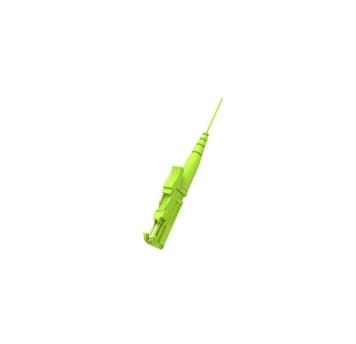The Importance of Protective Sleeves in Fiber Optic Jumper Connectors

Fiber optic jumper connectors play a crucial role in the transmission of data in telecommunications and networking systems. These connectors enable the seamless transfer of information between different fiber optic cables, ensuring reliable and high-speed communication. However, to ensure the longevity and performance of these connectors, it is essential to use protective sleeves.
1. Single Fiber Protective Sleeves
Single fiber protective sleeves are specifically designed to safeguard individual fiber optic jumper connectors. These sleeves provide a barrier against external elements such as moisture, dust, and physical stress. They are typically made of durable materials such as plastic or metal, ensuring long-lasting protection for the connectors.
In addition to their protective function, single fiber protective sleeves also aid in alignment during the connection process. They help maintain the proper position and stability of the connectors, ensuring efficient data transmission.
2. Ribbon Fiber Protective Sleeves
Ribbon fiber protective sleeves, as the name suggests, are designed for ribbon fiber optic jumper connectors. Ribbon fibers consist of multiple individual fibers arranged in a flat ribbon-like structure. These sleeves are specially designed to accommodate and protect these ribbon fibers.
Ribbon fiber protective sleeves offer similar benefits to single fiber sleeves, including protection against external factors and assistance in alignment. However, they are wider in size to accommodate the ribbon fibers, ensuring a secure and reliable connection.
3. Thermal Shrink Tubing
Thermal shrink tubing is another type of protective sleeve commonly used for fiber optic jumper connectors. It is made of a heat-sensitive material that shrinks when heat is applied, creating a tight and secure fit around the connectors.
Thermal shrink tubing provides excellent protection against moisture, dust, and physical damage. Its tight fit also helps maintain alignment and stability during data transmission. Additionally, this type of protective sleeve offers resistance to extreme temperatures, ensuring reliable performance even in harsh environmental conditions.
Conclusion
Protective sleeves are essential components in fiber optic jumper connectors, ensuring the longevity and performance of these critical communication devices. Single fiber protective sleeves, ribbon fiber protective sleeves, and thermal shrink tubing offer varying levels of protection and alignment assistance. By selecting and utilizing the appropriate protective sleeves, one can ensure efficient and reliable data transmission in fiber optic systems.



